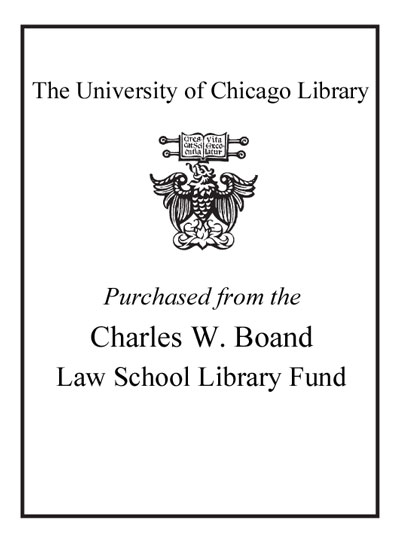Presumption of innocence : evidential and human rights perspectives /
Saved in:
| Author / Creator: | Stumer, Andrew C. (Andrew Carl), 1979- |
|---|---|
| Imprint: | Oxford ; Portland, Or. : Hart, 2010. |
| Description: | xl, 218 p. ; 24 cm. |
| Language: | English |
| Series: | Criminal law library ; v. 8 Criminal law library (Oxford, England) ; v. 8. |
| Subject: | |
| Format: | Print Book |
| URL for this record: | http://pi.lib.uchicago.edu/1001/cat/bib/8002827 |
Table of Contents:
- Foreword
- Table of Abbreviations
- Table of Cases
- Table of Legislation
- Table of Conventions, Treaties etc
- Introduction
- 1. The Presumption Before the Human Rights Act
- A. History of the Presumption of Innocence
- B. Burden of Proof
- 1. Persuasive Burdens
- 2. Evidential Burdens
- C. Standard of Proof
- D. Impact of the HRA
- E. Conclusion
- 2. Rationale for the Presumption
- A. Two rationales for the Presumption
- 1. Protecting the Innocent
- 2. Promoting the Rule of Law
- B. Limitation of the Presumption
- 1. Limitation of Rights
- 2. Threat of Serious Crime
- 3. When the Rationale is Attenuated
- C. Conclusion
- 3. Scope of the Presumption
- A. Substantive Approach
- 1. Rejection in the English Cases
- 2. Case for a Substantive Approach
- 3. Other Constraints on Unfair Offences
- B. Narrow Procedural Approach
- 1. Confusion in the English Cases
- 2. Case for a Narrow Procedural Approach
- C. Broad Procedural Approach
- 1. Greater Power includes the Lesser
- 2. Risk of More Strict Liability Offences
- D. Conclusion
- 4. The Presumption in Strasbourg
- A. The Content of the Presumption
- 1. Official Decisions Reflecting Guilt
- 2. Burden of Proof
- 3. Presumptions Confined within Reasonable Limits
- 4. Article 6(2) and Substantive Law
- B. Limitation of Article 6 Rights
- 1. Community Interest Under Article 6(2)
- 2. Community Interest and Other Article 6 Rights
- C. Conclusion
- 5. Proportionality and the Presumption
- A. Confusion in the English Cases
- 1. Necessity Approach
- 2. Balance Approach
- 3. A 'Difference of Emphasis'
- B. The Nature of the Proportionality Inquiry
- 1. Legitimate Objective
- 2. Suitability, Necessity and Balance
- 3. Proportionality and the Problem of Deference
- C. Conclusion
- 6. Allocating the Burden of Proof
- A. Seriousness of the Offence
- B. Penalty
- C. Regulatory Offences
- 1. Minimal Censure and Penalty
- 2. An Effective Regulatory Regime
- D. Knowledge and Ease of Proof
- 1. Relative Ease of Proof
- 2. 'Peculiar Knowledge'
- E. Importance of Matters Proved by Prosecution
- 1. Proof of Wrongfulness
- 2. Connection between Basic and Presumed Fact
- F. Conclusion
- Conclusion
- Bibliography
- Index

